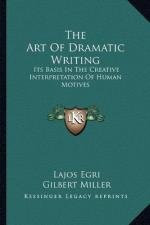|
This section contains 1,445 words (approx. 4 pages at 400 words per page) |

|
Book III: Conflict, Chapters 3 - 7 Summary and Analysis
Chapter 3: Static
The first conflict the author examines, or the lack thereof, is static. Conflict is needed to create more conflict, but it cannot be sprung in the first place unless the story's characters have goals. They need to know what they want, how they are going to get it, and this will cause movement. The opposite of this is static, when characters are just too lethargic to do any decision making. If a writer concludes that he must only add emotion to his character in order to fix this problem, the author concludes that this will not suffice. The character's emotions are of the utmost importance; however, unless this person shows he is willing to fight for whatever he is emotional about, the emotions themselves are not compelling enough to stand on...
(read more from the Book III: Conflict, Chapters 3 - 7 Summary)
|
This section contains 1,445 words (approx. 4 pages at 400 words per page) |

|




